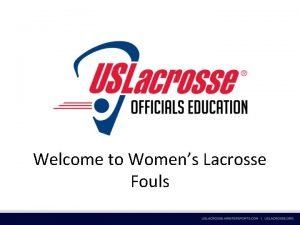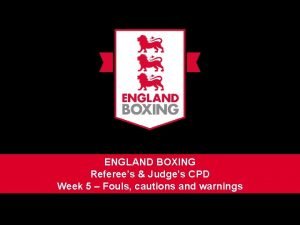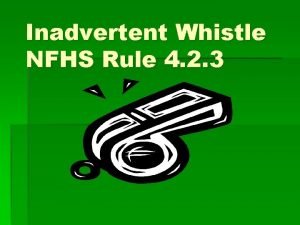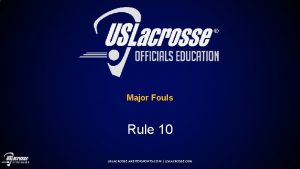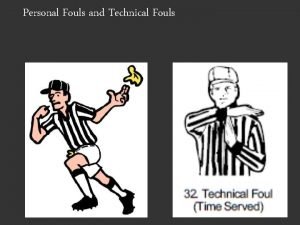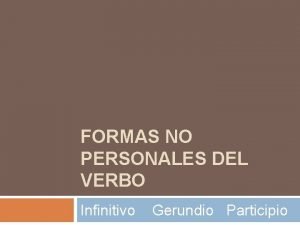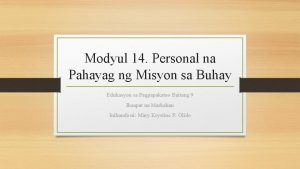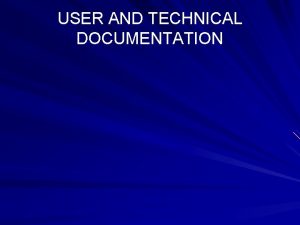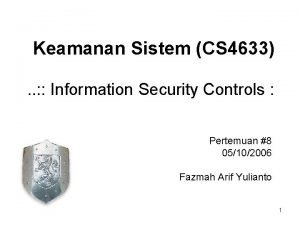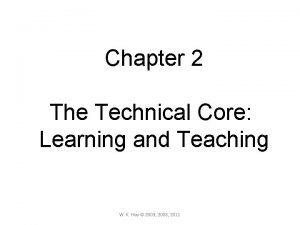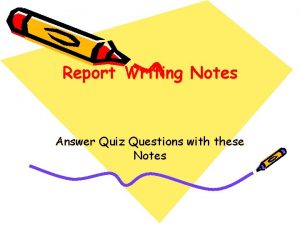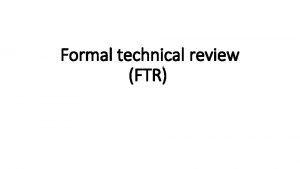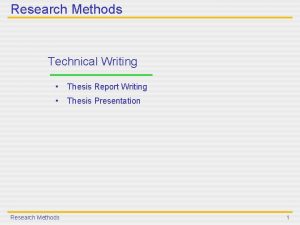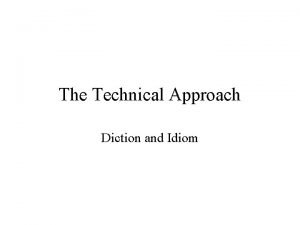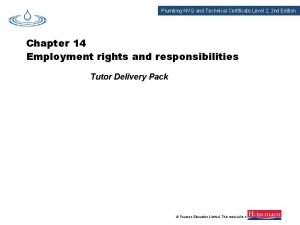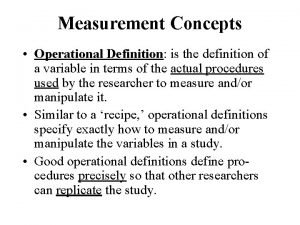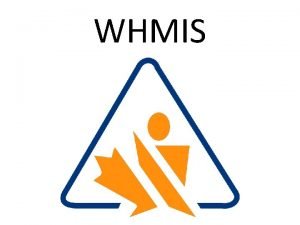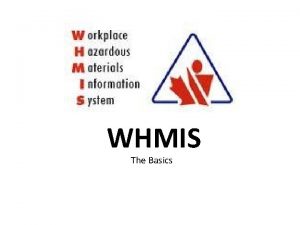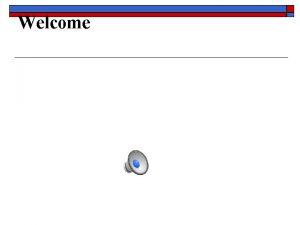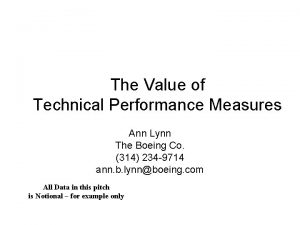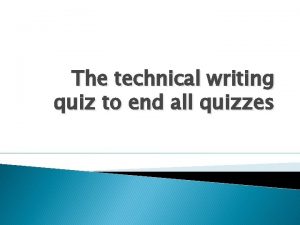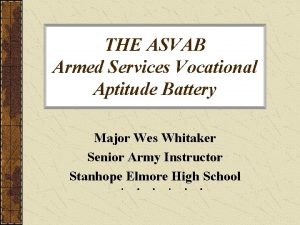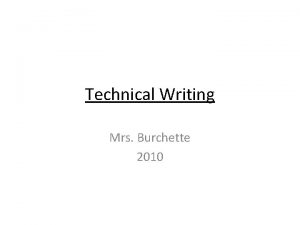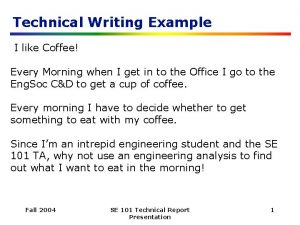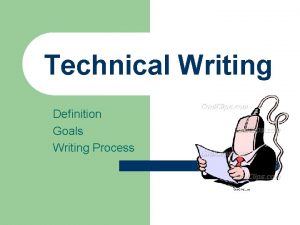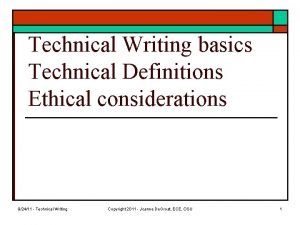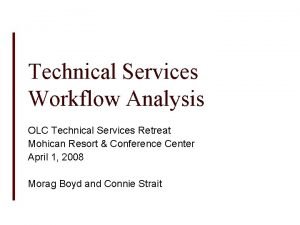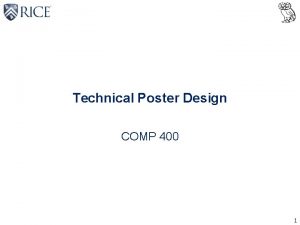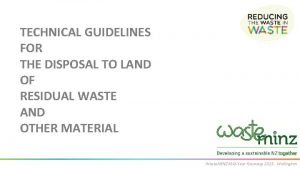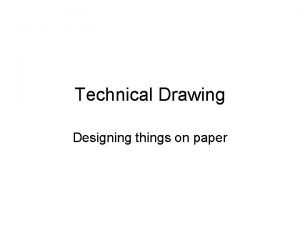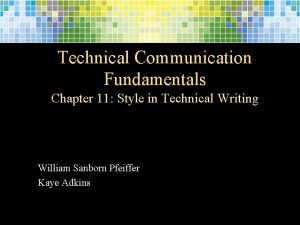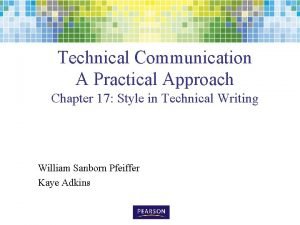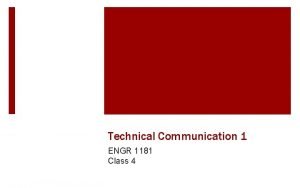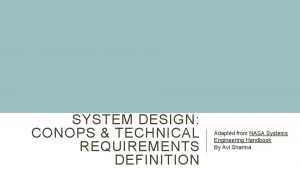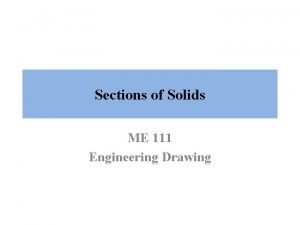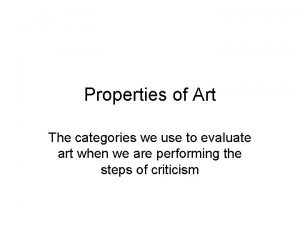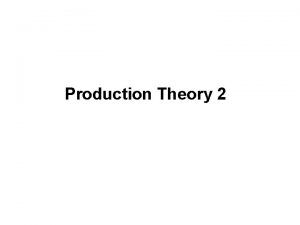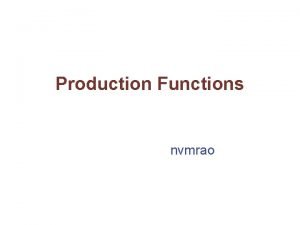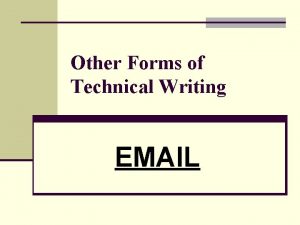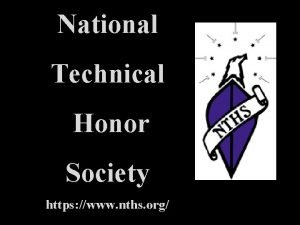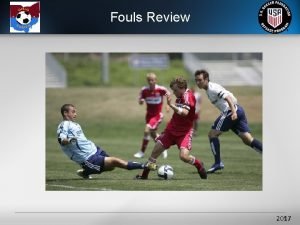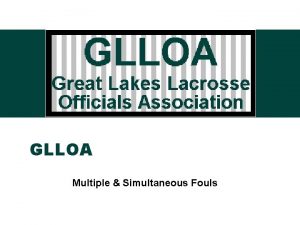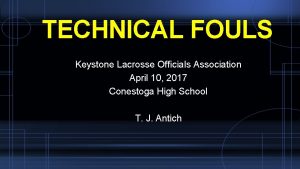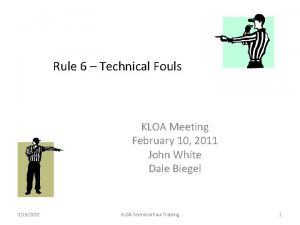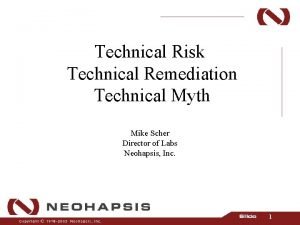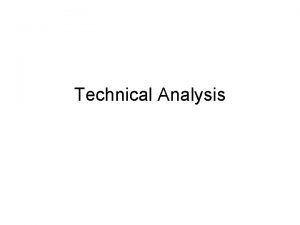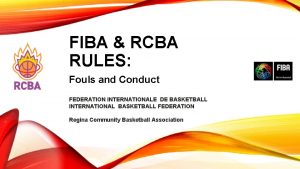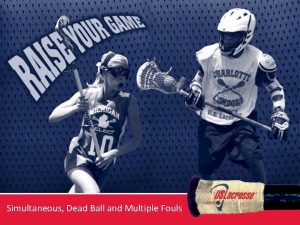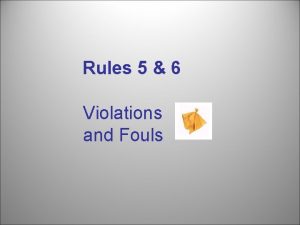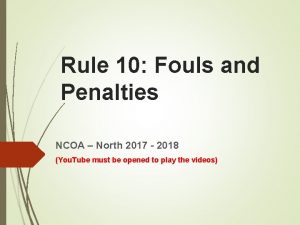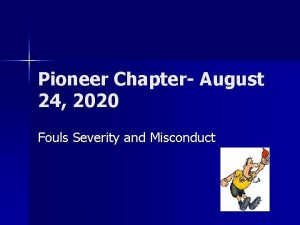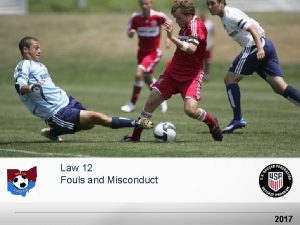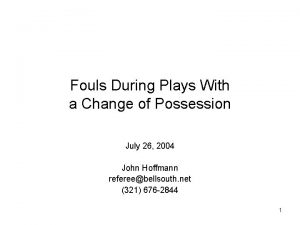Personal Fouls and Technical Fouls Personal Fouls and















![Personal Fouls and Technical Fouls IBC [1] You are body checking a passer or Personal Fouls and Technical Fouls IBC [1] You are body checking a passer or](https://slidetodoc.com/presentation_image_h/274bb3aa1af7631cf6096a83bbb00c47/image-16.jpg)
![Personal Fouls and Technical Fouls IBC [4] Your timing is good, but you took Personal Fouls and Technical Fouls IBC [4] Your timing is good, but you took](https://slidetodoc.com/presentation_image_h/274bb3aa1af7631cf6096a83bbb00c47/image-17.jpg)





































































- Slides: 86

Personal Fouls and Technical Fouls

Personal Fouls and Technical Fouls Intensified Contact Hitting Areas! End lines & Sidelines Dodges Shooting Zone 10 -12 yards out CREASE AREAS

Personal Fouls and Technical Fouls The Technical Fouls (Pushing, Holding, Warding off, Illegal offensive screening, interference, withholding ball) Fouls that cause an unfair advantage! Vs. The HEAVY/ VIOLENT FOULS (Personal Fouls: UR , IBC, Cross Checking, Tripping, Slashing) Fouls that present a Safety issue!

Personal Fouls and Technical Fouls TECHINCAL FOULS NFHS RULE 6 Technical fouls are those of a less serious nature than Personal fouls and include all violations of the rules of the game except Personal fouls. Some Technical fouls are closely associated with Personal Fouls! [Pushing, Holding, Conduct…. IBC, UR, Cross Checking, Tripping, Unsportsmanlike conduct. The penalty for Technical fouls depends on whether the offended team has possession of the ball!

Personal Fouls and Technical Fouls Reviewing Technical Fouls Technical fouls are those of a less serious nature than Personal fouls and include all violations of the rules of the game except Personal fouls. [Interference, Illegal offensive screening, with holding ball from play, stalling] Some Technical fouls are closely associated with Personal Fouls! Reviewing personal fouls: Slashing, Illegal equipment, illegal crosse, ejection and fouling out.

Personal Fouls and Technical Fouls PERSONAL FOULS NFHS RULE 5 Personal fouls are those of a serious nature. They include: illegal body checking, slashing, crosse checking, tripping, unnecessary roughness, unsportsmanlike conduct and use of an illegal crosse. The penalty for a personal foul is 1 to 3 minutes depending on the severity of the foul.

Personal Fouls and Technical Fouls TECHNICAL FOULS Penalty Enforcement If the ball is loose, there should be a Play-On, and if the offended team does not gain possession, they are awarded the ball at the spot where the ball is– if inside the attack area--- then move laterally outside attack area. If the team that has possession commits a technical foul, there is an immediate whistle and the ball is awarded to the opposing team at the spot or outside the attack area. If Team A has possession and Team B commits a technical foul (other than goalie interference or crease violations) the Flag down, Slow-Whistle (FDSW) technique is used. If Team A does not score a goal during the FDSW situation, then the player committing the foul will serve a 30 -second penalty. If the ball was blown dead in the offended team’s defensive half, they will be awarded ball just over midfield (Free Clear) If blown dead in the team’s offensive half, the ball is awarded at the spot or laterally outside the attack area closest to where the ball was. If the offended team A scores a goal during the flag down situation,

Personal Fouls and Technical Fouls TECHNICAL FOULS Advantage / Disadvantage Difficult part is determining which fouls to call and which to ignore. The best idea is that you should call: Fouls that present a Safety issue (most personal fouls) MUST BE CALLED! Fouls that you MUST CALL to maintain PROPER BEHAVIOR (Conduct fouls & Unsportsmanlike conduct fouls) Fouls that are abjectly obvious to everyone (line violations such as crease and off sides)

Personal Fouls and Technical Fouls Technical fouls that disadvantage the fouled team or create an unfair advantage for the fouling team This last item is the most difficult to explain: Suppose A 1 is running down the field clearing the ball and B 1 pushes him from behind , making him stumble but not fall or loose possession of the ball. There’s no need to call a foul. However if exactly the same thing happens and the push causes A 1 to go Out of bounds, Off-sides, step into the crease, move past the goal making him miss a scoring opportunity, loose possession or the push comes after A 1 shoots or passes and the push was not a violent hit (IBC); Call the technical foul.

Personal Fouls and Technical Fouls TPOAD (The Principle of Advantage Disadvantage) Advantage/disadvantage is best left to "judgment" calls, not to clear rule infractions. Judgment calls you can always say "Hey, it was my call and I don't think it was a push". You cannot say "Hey, B 1 was clearly 5 feet over the line, but I'm not going to call it this time". Applying TPOAD is important in lacrosse because it keeps the game moving. If you called everything that was technically a rules violation even if there was no advantage gained, a high school game would take 2. 5 hours.

Personal Fouls and Technical Fouls NOT VIOLENT MORE VIOLENT OVERLY AGGRESSIVE OVER THE LINE AGGRESSIVE

Personal Fouls and Technical Fouls Pushing or Illegal Body Check or Unnecessary Roughness Illegal pushing includes pushing an opponent from the rear, pushing an opponent who is neither in possession or within 5 yards of a loose ball, pushing with anything other than a closed hand, shoulder or forearm or with a free hand not on the crosse. Pushing is legal when done from the front or side when the opponent has possession or within 5 yards of a loose ball. Look for both hands on crosse and gloved hands together. Pushing is considered to be force applied after contact is made. If it’s a violent blow (Punching) it should be a personal foul for IBC (Illegal Body check) or UR (unnecessary roughness). PUSHING with hands apart using the shaft is a Personal foul: Cross Check, or throwing a forearm shiver with a free arm is an IBC. Anything too violent could be an intent to injure and be

Personal Fouls and Technical Fouls We have to get pushing from rear on sidelines trying to force an opponent OOB (out of bounds), same on end lines, pushing in rear to shove an opponent over midfield line offside or pushing into crease. If opponent gets pushed from rear and stumbles, losing ball or pushed past a good angle when shooting on the goal, throw the flag. • Also after a shooter releases a shot or pass and his defender shoves, pushes from the rear or side after the ball is greater than 5 yards away from the shooter and the shove/ push is not violent but causes the shooter to fall to ground or stumble badly: call a Play- On, loose ball push or interference if the check was from front or side and give the ball back to the shooter’s team. If the hit was real late and violent call IBC or UR.

Personal Fouls and Technical Fouls Illegal Body Check (IBC) Rule 5 Section 3 1) Body checking of an opponent who is not in possession of the ball or within five yards of a loose ball. 2) Avoidable body check of an opponent after he has passed or shot the ball. 3) Body checking of an opponent from the rear or at or below the waist

Personal Fouls and Technical Fouls Illegal Body Check (IBC) Rule 5 Section 3 4. Body checking of an opponent by a player in which contact is made above the shoulders. The initial contact shall determine whether a body check is legal– spinning or ducking player! 5. To be legal such a body check shall be below the neck and both hands of the player applying the check shall remain in contact with his crosse—No one armed shivers! 6. Body checking of an opponent who has any part of his body other then his feet on the ground. 7. Blocking of an opponent with the head or initiating contact with the head (spearing) Minimum of a one-minute nonreleaseable penalty will be accessed for spearing.
![Personal Fouls and Technical Fouls IBC 1 You are body checking a passer or Personal Fouls and Technical Fouls IBC [1] You are body checking a passer or](https://slidetodoc.com/presentation_image_h/274bb3aa1af7631cf6096a83bbb00c47/image-16.jpg)
Personal Fouls and Technical Fouls IBC [1] You are body checking a passer or shooter and, at the moment of contact, you are more than 5 yards from the ball. If the player has thrown a pass / shot at 30 mph (not a particularly fast pass), then the ball is traveling 44 feet per second. Therefore, you have about 1/3 of a second from the release of the pass or shot (a little longer than the blink of an eye) to complete the bodycheck, otherwise, your big hit will be penalized for being late. [2] You are body checking someone who has set a legal pick on you and you knew that the pick was there. If you steamrolled him anyway, then your big hit is unnecessary roughness. (The same would be true if the opponent was standing under a buddy pass, waiting for it to come to earth. ) [3] You are sliding to cover a potential shooter and you make contact before the ball is within 5 yards. If the feeder fakes a pass, the feeder passes to someone else, the pass is wild or the pass is knocked down by your teammate, then this body check is illegal.
![Personal Fouls and Technical Fouls IBC 4 Your timing is good but you took Personal Fouls and Technical Fouls IBC [4] Your timing is good, but you took](https://slidetodoc.com/presentation_image_h/274bb3aa1af7631cf6096a83bbb00c47/image-17.jpg)
Personal Fouls and Technical Fouls IBC [4] Your timing is good, but you took a 5 or 10 yard run at your opponent; in this case, you could be penalized for unnecessary roughness. [5] You have only one hand on your crosse. Hockey and football players make this mistake sometimes. [6] Your body check makes a loud sound and your opponent goes flying. Many officials will flag this for unnecessary roughness, under theory that body checking is allowed to take an opponent out of the play, but not to take him out of the game. This judgment depends a lot upon the level of play, with collegiate players being allowed to hit harder than junior high school players.

Personal Fouls and Technical Fouls IBC So we have team A and team B. And player A and player B. Team A is dominating team B in face-offs the whole game. Then team B sends out player B, a gigantor defender to take the face-offs. After lining up for the faceoff player A clamps the ball, but player B stands up, gets on the balls of his feet and decks player A and doesn't even attempt a clamp. Is this illegal or just unethical? As long as he hits Team A's player between his waist and shoulders in the front it's legal, which is hard if Team A attempts a clamp, because he's bent over. I would call loose ball push if he extends his arms. Also if either of his gloved hands is touching the ground it’s illegal body check. Body checking an opponent who has any part of his body other than his feet in contact with the ground is illegal. NCAA 5 -4 -d; NFHS 5 -3 -5

Personal Fouls and Technical Fouls Unnecessary Roughness (Rule 5 Section 8) 1) An Excessively Violent infraction of the rules against holding and pushing 2) Deliberate and Excessively Violent contact made by a defensive player against an offensive player who has established a screening position. 3) Any avoidable act on the part of a player that is Deliberate and Excessively Violent, whether with the body or the crosse. May include a legal body check 4) A check delivered with the gloved hand or hands may not be delivered with Punching Blow.

Personal Fouls and Technical Fouls Unnecessary Roughness The NFHS rulebook uses words that are subject to a lot of interpretation by the official. The rules for Unnecessary Roughness (Rule 5 -8 -3) use the words "an avoidable act. . . that is deliberate AND excessively violent. . . may include a legal body check". In other words, if the official believes that the body check ("hit") as you describe it was unnecessary in order to gain possession of the ball, then he could call UR. Experience is that officials are not always in agreement with the interpretation of these words. In our KLOA Association, we should go by the rule of thumb "you can take someone out of the play, but you can't take him out of the game". It seems to work pretty well.

Personal Fouls and Technical Fouls Unnecessary Roughness Also in the high school rules, (Rule 5 -8, Situation C) the rulebook adds the word "vulnerable". Although, again, this word is subject to a lot of interpretation by the official, it is specifically meant to protect the safety of players who are not expecting to be body-checked. The rulebook mentions two specific situations where this "vulnerability" is likely to occur. First is the "buddy pass“ in 5. 8 situation C, and the second situation is when a player is entering the field of play from either the penalty box or the special substitution box (5. 8 situation D & E). Since the player's entry onto the field may not be expected by his participating opponent, he could be considered vulnerable. Can a player released from the box, immediately body check an opponent? No Can you body check an opponent who is the recipient of a buddy pass? No

Personal Fouls and Technical Fouls Unnecessary Roughness In applying this vulnerability rule, we can sometimes include a third situation not mentioned specifically in the rulebook but ties into UR. That is, a player with his head down, scooping a ground ball. This player could be considered "vulnerable" and the UR rules would apply. Again, the check would have to be "avoidable" and this word is a very difficult word to define. You can be pretty certain that if you really clobber somebody that is trying to pick up the ball and has his head down doing it, you stand a very good chance of being called for unnecessary roughness.

Personal Fouls and Technical Fouls UR I've called UR in high school games when a player in possession who is smallish/relatively unskilled is "legally" checked "unnecessarily" hard by a larger more athletic player, particularly if the hit is well away from the goal. However, I temper the flag with the distance from the goal. I use the Solar System analogy with the goal being the sun. I'll throw the flag at Pluto but not at Mercury. "The closer you get to the sun, the hotter it gets!“ Any act on the part of a player that is deliberate and excessively violent, whether it be with the body or crosse. “ NFHS goes on to explicitly say that this may include a body check which is otherwise legal.

Personal Fouls and Technical Fouls I don't really like the idea of calling plays differently based on the relative size of the player. Being big is an advantage in a contact sport. This is a frequent objection, but it holds no water. If you're bigger, you can easily knock people down and separate them from the ball. That's an inherent advantage of being bigger. You cannot, however, use your additional size to attempt to injure the smaller player. If you're hitting that player significantly harder than is necessary to put him on the ground and separate him from the ball, then it's unnecessary roughness. Don't think the UR rule puts larger players at a disadvantage, it just requires them to use some discretion. If you get the sense that the larger more athletic player is more interested in delivering a vicious blow than procuring the ball, I flag it as being unnecessarily rough. Correct me if I'm wrong, but I'm pretty sure there's no rule in NCAA or NHFS that addresses "leaving the feet" when hitting someone> no but i consider leaving one's feet to meet one of my requisites for the "unnecessary" aspect of UR

Personal Fouls and Technical Fouls Cross Checking Rule 5 Section 2 A player may not check his opponent with his crosse in crosse-check position. That is, a check with that part of his handle of the crosse that is between the player’s hands, either by thrusting away from the body or by holding it extended from the body.

Personal Fouls and Technical Fouls

Personal Fouls and Technical Fouls What is the difference between a cross check and a cross check hold. EXPLANATION: The cross check is a blow, one that “bends the spine. ” You asses a one minute foul as this can cause injury. (See above: bending the spine. ) The cross check hold is a maneuver which takes the “player’s move away. ” The first presents a physical threat to the ball carrier. The second should not lead to injury but it will alter the outcome of the game.

Personal Fouls and Technical Fouls Tripping Rule 5 Section 7

Personal Fouls and Technical Fouls Tripping Rule 5 Section 7 A player may not trip a player with any part of his body or crosse. Tripping is obstructing an opponent at or below the waist with the crosse, hands, arms, feet or legs, by any POSITIVE PRIMARY ACTION if the obstructing player is on his feet or by any secondary action when the player is not on his feet. When a player legally checks the crosse of an opponent and he result is to cause the opponent to trip over his own crosse, No Foul has been committed. Same No FOUL when a player is attempting to scoop a loose ball and opponent trips over the crosse.

Personal Fouls and Technical Fouls Holding NFHS Rule 6 Section 3

Personal Fouls and Technical Fouls NFHS Rule 6 Section 3 Holding Art. 1. . A player shall not impede the movement of an opponent or his crosse Art. 2. A player may not: 1. Use the portion of the handle that is between his hands to hold an opponent 2. Step on the crosse of an opponent 3. Hold an opponent with his crosse 4. Hold or pin an opponent’s crosse against the body of the opponent with his crosse. Art. 3. Holding is permitted under the following conditions: 1. An opponent with possession of the ball or within 5 yards of a loose ball maybe held from the front or side 2. An opponent with possession of the ball maybe played with a hold check from the rear if the hold exerts no more than equal pressure. For both (a) and (b) a hold check shall be done with either closed hand, shoulder or forearm and both hands shall be on the crosse. A player may hold the crosse of an opponent with his crosse when that opponent has possession of the ball. A player within 5 yards of a loose ball may hold the crosse of his opponent with his own crosse.

Personal Fouls and Technical Fouls Holding A player can’t hold a player’s body with his stick, free hand or leg. Stick-to-stick and body-to-body contact is sometimes legal. Stick-to-body and body-to-stick contact is never legal (that doesn't mean it's called every time--TPOAD and all-but it's never legal). Player must be close to player in possession and have both hands on crosse using shoulder or forearm or hands held close together to apply equal pressure (not a punch which could be violent of personal foul nature).

Personal Fouls and Technical Fouls SITUATIONS and RULINGS on HOLDING A 1 is within five yards of a loose ball. B 1 holds A 1’s crosse with his crosse, preventing A 1 from participating in the play. RULING: Legal hold. A 1 has the ball in his possession. a) A 1 has his crosse held by B 1’s crosse which prevents him from performing his normal function. RULING: Legal hold. b) B 1 holds A 1’s crosse against A 1’s body, restraining A 1’s movement. RULING: Holding by B 1. c) B 2, with gloved hand over end of the crosse, is exerting equal pressure from the rear against A 1, thus preventing him from advancing toward goal. RULING: Legal Play. d) B 1, with gloved hand over end of the crosse, is exerting pressure from the rear against A 1. B 1 exerts enough pressure to force A 1 to move away from goal. RULING: Technical foul against B 1. Only equal pressure may be used. 6. A 1 takes a post position and holds his crosse in front of him a) with the head of the crosse resting on the ground. A 2 cuts around A 1, and B 2, pursuing A 2, falls over A 1’s crosse. RULING: Technical foul against A 1, illegal screening position. b) extended in front of him. A 2 cuts around A 1, and B 2, pursuing A 2, runs into the extended crosse and is held back by A 1 ‘s crosse. RULING: Technical foul against A 1, holding.

Personal Fouls and Technical Fouls Warding Off NFHS Rule 6 Section 11

Personal Fouls and Technical Fouls Warding Off NFHS Rule 6 Section 11 The player in possession of the ball may not use his free hand or other part of his body to hold, push, or otherwise control the direction or movement of his opponent’s crosse or body of the player applying the check. A player in possession may protect his crosse with his hand, arm or other part of his body when his opponent makes a play to check his crosse. Remember the player must be in possession for a ward. MECHANIC: “Advantage and Disadvantage. ” Coaches are going to scream regardless, so you should learn how to ignore them. But if the movement gives the offensive player an advantage, then you should make the call. If a defender puts the head of his stick under an offensive player’s arm and the offensive player lifts his arm over the defender’s stick, that does not constitute a WARD unless he subsequently uses that arm to push or direct the defender’s crosse.

Personal Fouls and Technical Fouls Warding Off If you body check a player when you have the ball, they obviously don't have it and aren't within 5 yards of a loose ball. That makes it technically an illegal body check. This is typically not called, but when you initiate helmet contact, well, that typically is called in other words, and at the very least, you could be called for warding off. . although depending upon the severity of the contact IBC or even UR are optional.

Personal Fouls and Technical Fouls Warding Off NFHS Rule 6 Section 11 "Playing with the free hand" is not a phrase used in the rules at the NCAA or NFHS level. You can play with one hand off the stick. However, you can't really do much with that hand off the stick (it ends up being an illegal push or hold or a ward in most cases), and in fact even if you aren't using the hand it makes some actions illegal (a body check, push, or hold with one hand on the stick is automatically illegal even if it would otherwise be legal with both hands on the stick).

Personal Fouls and Technical Fouls A quick guide for new(er) officials that was passed down to me was: the attacker has the right to untangle himself from the defender's stick, but he can't use his arm to move/push/etc the stick or block a check

Personal Fouls and Technical Fouls

Personal Fouls and Technical Fouls HOLDING or WARDING To often the long stick goes under the attackers arm and the defender lifts the attacking players arm - most of the time there is no call from the official (albeit several warding calls from sideline) - I think that officials as a group need to start calling a hold when this defensive action impedes the movement of his opponent. warding is defined by a couple of words, "controls the opponents crosse". When officials looked for that, not just an arm moving there is no problem with making the correct call. if the defender gets his stick under the arm and the attacker lifts his arm away - it is NOT a ward - despite the cacophony of "warding!" calls it elicits from the sidelines and stands. At the time this interaction is occurring, you need to make sure that the defender doesn't lift and pull back on the arm (holding) and that the attackman doesn't clamp down on the defender's stick (holding). It's just one of the humorous things I see and hear on the field, the tolerance level for various fouls. Warding is one of the lowest tolerance fouls out there, and everyone thinks they know how to call it.

Personal Fouls and Technical Fouls You must have possession to ward. Using your arm to hold off a stick check by an opponent in a loose ball situation is holding. "A player shall not impede the movement of an opponent or his crosse. [The rule then provides for exceptions not applicable here]“ It most likely is either holding or pushing. You cannot impede (hold) or push an opposing player unless both hands are on the crosse.

Personal Fouls and Technical Fouls Holding or Not If, however, the defender makes no effort to remove his stick from the entanglement, and he "lifts" the arm in such a way as to impede the free movement of the offensive player, this is an easy call and a flag will be thrown. I guess my inclination is to call it a hold if the attacker is disadvantaged, even if the entanglement was unintentional, since the entanglement is the result of an action initiated by the defender The defender most the time is not still making contact with the stick. He simply has the attackers arm (now off the stick) hooked and held. The defender is lifting the arm - the attacker is trying to get his arm away but because the defender continues to forcibly lift the arm the attacker can not get it away and therefore is not free to move as he wants.

Personal Fouls and Technical Fouls Unsportsmanlike Conduct or Behavior NFHS Rule 5 Section 9

Personal Fouls and Technical Fouls Unsportsmanlike Conduct or Behavior NFHS Rule 5 Section 9 No player, substitute, non-playing member of a squad, coach or anyone officially connected with a competing team shall: 1. Enter in an argument with an official as to any decision that has been made or in any way attempt to influence the decision of the official. 2. Use threatening, profane, or obscene language or gestures at any time during the game. 3. Bait or call attention to oneself, or any other act considered unsportsmanlike by the officials. Penalty to above items 1 -3 minutes Non-Releaseable penalties in all cases

Personal Fouls and Technical Fouls Unsportsmanlike Conduct or Behavior Cont’d No player, substitute, non-playing member of a squad, coach or anyone officially connected with a competing team shall: 1. Repeatedly committing the same technical foul 2. A player deliberately failing to return to the field after leaving the field of play while a legal player in the game. 3. As a substitute, deliberately fail to comply with the rules for entering the field of play. Penalty to above items 1 -3 minutes releaseable penalties in all cases

Personal Fouls and Technical Fouls NFHS Rule 6 Section 6 Conduct Foul

Personal Fouls and Technical Fouls NFHS Rule 6 Section 6 Conduct Foul Conduct only applies to objecting to Official’s decisions, (not taunting or foul language) or Coaches leaving the coaches area or players leaving bench area (coming onto the field to argue)

Personal Fouls and Technical Fouls 1. 2. 3. 4. The Conduct Foul The rules do allow for a conduct foul against a player who argues, objects or gesture to calls or non-calls. Call the conduct foul and take the ball away if the infraction is apparent but not worthy of a one minute non -releasable foul? Escalating Steps on Conduct situations: Call Conduct foul while team has possession, take ball away. Conduct foul : time serving 30 second technical foul Unsportsmanlike Conduct personal foul: 1 -3 minutes nonreleasable. 2 nd Unsportsmanlike Conduct foul and ejection: 3 minutes non-releasable

Personal Fouls and Technical Fouls If the youngster acts the part of the fool, call him for a one minute non-releasable foul. But do not be baited by his subsequent actions. Let the coach get him on the bench and try to settle him down before assessing a second, and final, foul resulting in ejection

Personal Fouls and Technical Fouls Good Officiating tips to live by: “Proper Preparation Prevents Poor Performance” “If you are not getting better - you must be getting worse. ” “It is not who you are - it is who people think you are. ”

Personal Fouls and Technical Fouls Slashing Rule 5 Section 6

Personal Fouls and Technical Fouls Slashing Rule 5 Section 6 1) Swinging a crosse at an opponent’s crosse or body with DELIBERATE VICIOUSNESS or RECKLESS ABANDON, regardless of whether the opponent’s crosse or body is struck. REMEMBER : DELIBERATE VICIOUSNESS or RECKLESS ABANDON

Personal Fouls and Technical Fouls Slashing Rule 5 Section 6 2. Striking an opponent in an attempt to dislodge the ball from his crosse, where the player attempts to protect his crosse, uses some part of his body to ward off the thrust of the defensive player's crosse and as a result, the defensive player’s crosse strikes some part of the attacking player’s body other than his neck or head. (missed the crosse and hit body)

Personal Fouls and Technical Fouls Slashing Rule 5 Section 6 3) Striking an opponent in any part of the face, neck, chest, back, shoulders, groin or on the head with the crosse (including its but head), except when done by a player in the act of passing, shooting or scooping the ball. Player’s gloved hand shall be considered part of the crosse.

Personal Fouls and Technical Fouls Slashing v. Holding Stick-to-stick and body-to-body contact is sometimes legal. Stick-to-body and body-to-stick contact is never legal (that doesn't mean it's called every time--TPOAD and all--but it's never legal). REMEMBER : DELIBERATE VICIOUSNESS or RECKLESS ABANDON ESPECIALLY ON WRAP CHECKS AND RIDING ATTACKMAN SWINGS

Personal Fouls and Technical Fouls How legal are Ice pick checks? and if they are, what defines an illegal ice pick and what defines a legal one? What do refs look for to determine the legality of the check in question? An Ice Pick is a type of over-the-head check that uses the butt end of the shaft to either dislodge the ball from the stick of to hit the shaft. You can do it with a d-pole to but its quite difficult. As with a one-handed wrap-around check, there must be no holding or pushing with the free hand. As with any other stick check, there must be no contact with the attacker's head, neck, shoulders, back, etc. 1) It is easy to be called for "holding" if you don't release the check quickly enough. 2) Some players use the ice pick with one hand on the stick and the other hand on the opponent's body. This can also be considered "holding".

Personal Fouls and Technical Fouls You can play with one hand off the stick. However, you can't really do much with that hand off the stick (it ends up being an illegal push or hold or a ward in most cases), and in fact even if you aren't using the hand it makes some actions illegal (a body check, push, or hold with one hand on the stick is automatically illegal even if it would otherwise be legal with both hands on the stick). On One-handed swings by a riding defender, watch the free hand for holding.

Personal Fouls and Technical Fouls Humor from crowd: BCF! (BCF: Brotherhood of Clueless Fans) That whacks to the back, legs, arms, etc. are "just letting them play" - but the slightest touch on the head brings out yelps of "slash!!"

Personal Fouls and Technical Fouls INTERFERENCE Rule 6 Section 7 NOT VIOLENT MORE VIOLENT OVERLY AGGRESSIVE OVER THE LINE AGGRESSIVE

Personal Fouls and Technical Fouls INTERFERENCE Rule 6 Section 7 A player shall not interfere in any manner with the free movement of an opponent, except when that opponent has possession of the ball, the ball is in flight and within 5 yards of the players, or both players are within 5 yards of a loose ball. Remember there must be contact between opposing players for interference.

Personal Fouls and Technical Fouls Examples of INTERFERENCE • Defensive player bumping into a cutter. • Checking the crosse of player who is not in possession or within 5 yards of loose ball • A player who does not release---and continues to “box out”--- an opponent after his teammate gains possession of a loose ball When should you call interference on or around the crease? EXPLANATION: Ask yourself if the defensive maneuver had any impact on the play. The key issue there is whether the violation occurs at the “point of attack. ” In short, does it create an advantage? Is the violation one which has an impact on the flow of the game. If it does, throw the flag or blow it dead, If not, pass on the call. Point of attack interference, where a cutters being block or held and misses out on receiving a good pass /feed in the crease area, this should be called. On Loose ball play look for interference when a player continues to check or box out an opponent even after his team mate controls possession of the loose ball.

Personal Fouls and Technical Fouls INTERFERENCE Rulings Situation A. A 1 attempts to pass to A 2, cutting around crease. Before the ball has left A 1’s crosse or is within 5 yards of A 2, goalkeeper B 1 checks A 2’s crosse. RULING: Interference by goalkeeper B 1. Situation B. A 1 is running away from B 2, who is playing A 2; B 2 establishes contact with A 1 while pursuing A 2. Is this interference on A 1? RULING: Yes, provided that A 1 was moving at time of contact by B 2. Situation C. A 1 runs interference for A 2, who has possession of the ball. A 1 runs toward B 2, who is playing A 2, but does not establish contact with B 2. Is this interference? RULING: No.

Personal Fouls and Technical Fouls INTERFERENCE Rulings Situation D In a typical weave play, B 1 makes contact in any fashion with A 1. Is A 1 guilty of a foul (interference)? RULING: Yes, if B 1 definitely was in pursuit of an opponent. No, if B 1 was not in pursuit of an opponent. Situation E A 1 drops his crosse with the Ball in it. (1) A 1 tries to retrieve his crosse. (2) A 2 or B 1 kicks the crosse on the ground to try to gain access to the ball. (3) A 2 or B 1 uses his crosse to try to gain access to the ball. RULING: If the ball is stuck in the crosse, immediate whistle and award the ball to Team B. Otherwise: (a) Illegal procedure on A 1 for participating in the play without equipment. (b) No foul. (c) No foul.

Personal Fouls and Technical Fouls Illegal Offensive Screening NFHS Rule 6 Section 4 No offensive player shall move into and must make contact with a defensive player with the purpose of blocking a defensive player from the man he is playing, nor shall the offensive player hold his crosse rigid or extend his crosse rigid to impede the normal movements of the defensive man. If contact is made between offensive and defensive players as a result of the offensive player’s setting a screen, the offensive player shall be stationary before the contact occurs. However a player maybe called for an illegal screening position (e. g. standing with crosse extended rigid) even if no contact is made with defender.

Personal Fouls and Technical Fouls Moving Picks and Impeding movement. Moving picks and players using the head of the stick to impede the movement of the defender is a concern. Officials are instructed to call moving picks more consistently and pay attention to players using the head of their sticks to impede the movement of the defender. The intent is to eliminate contact or interference with an extended stick in relation to moving picks

Personal Fouls and Technical Fouls Illegal Offensive Screening One thing you can find interesting is that, when you watch some NBA basketball recently, you find that just about every pick they set would be illegal in lacrosse. They may have had their feet set (I'm not even convinced of that) but they sure weren't "motionless"! I think that may be one reason we get so many illegal screen calls early in the season: people transitioning from basketball.

Personal Fouls and Technical Fouls STALLING NFHS Rule 6 Section 10 When should the officials warn a team to “keep the ball in” the zone? RULING: Teams shall be warned to “keep it in” when: a) it is obvious that a team is keeping the ball from play, not going to their goal. b) During the last two minutes of regulation play, when offensive stalling rules are in effect for the team that is ahead. When the score is tied, neither team is forced to keep the ball in the goal area.

Personal Fouls and Technical Fouls STALLING NFHS Rule 6 Section 10 The stalling warning remains in effect until: 1. A goal is scored 2. Defensive team gains possession of the ball 3. Period ends resulting in a faceoff *A timeout or a penalty to defensive team does not end the stall warning!

Personal Fouls and Technical Fouls STALLING MECHANIC: The mechanic is important. When coming up on the final two minutes of the game: make eye contact with your partner and be prepared for the situation. . Then lift one arm up and point the other arm into the attack area. The officials shall say “Keep the ball in!” It is best to repeat this a few times.

Personal Fouls and Technical Fouls For a delay of game situations not in last 2 minutes, alert your partner (usually the lead and single-side in 3 -man) that you are going to put the stall on. The signal is arms crossed in front of your body. MECHANIC: Try to wait until the team has the ball at a point behind the goal (optimum position) or away from any of the attack area lines. Both officials signal, Visually and Verbally.

Personal Fouls and Technical Fouls STALLING Review of the situations where a team can lose the ball. RULING: The team will lose the ball if they: a) Run or throw the ball out of their attackgoal area box. b) Make a pass, either complete or incomplete, where the ball leaves the box c) The player is legally checked out of the area with possession of the ball.

Personal Fouls and Technical Fouls STALLING When can the offensive team lose the ball outside the attack-goal area and Retain possession? RULING: The offensive team will retain possession of the ball if: a) They shoot the ball and it leaves the attack-goal area as a result. b) Their pass is deflected by the defensive team. c) A loose ball results and the ball is directed out of the box by the defensive team. (Suggestion* Basketball referees use the basic guidelines for back court violations and OOB passes. TIP Signal ) SITUATION: Team A is leading by one goal and has a player serving a non releasable foul during the last two minutes of the game. Is A required to “keep it in” the goal area? RULING: Yes.

Personal Fouls and Technical Fouls STALLING MECHANIC What is the proper mechanic for suspending play on this kind of situation? Do not penalize the defensive team. If the ball comes loose, look at the play and ask if there is an opportunity for the defense to gain an advantage in a transition setting. Note* Allow the defense a chance to pick the ball up. If the defender does not get it clean, kill the play and award possession. If the defense is going to pick the ball up, and there is a player waiting to check the ball out of his stick, kill the play and award the ball. However, in some cases, the defensive player picks up the loose ball and carries it for a few steps. Then he is checked and the drops free. This is a loose ball. Time left plays into whether to kill quickly. Where should the ball start on a Restart after a shot on goal? MECHANIC: If the offensive team is going to be placed at a disadvantage, which would occur if the ball were put into play at the corner of the box in the final two minutes, start the ball outside the area.

Personal Fouls and Technical Fouls WITH HOLDING BALL From PLAY NFHS Rule 6 Section 12 When a loose ball is on the ground, a player shall not lie on the ball, trap it with his crosse longer than is necessary for him to control the ball and pick it up with one continuous motion, or withhold the ball from play in any other manner. A player, players or team shall not deliberately withhold the ball from play. Repeated actions of this nature shall be ruled unsportsmanlike conduct.

Personal Fouls and Technical Fouls WITH HOLDING BALL From PLAY When a ball is lodged in a player’s equipment, or when it is caught in his crosse, what guidelines affects the official’s decision? RULING: Consider the safety of the player. A ball caught in the crosse can be dislodged. A ball in his uniform cannot. If the ball becomes caught in a player’s crosse, the official shall blow the whistle and immediately award possession to the opposing team at that spot. If the ball is caught in a player’s uniform or equipment other than his crosse, play shall be suspended immediately, and the ball shall be awarded according to the alternate-possession rule. PLAYER SAFETY COMES FIRST! Does this situation apply to the goalkeeper? RULING: No. Neither situation applies to a designated goalkeeper if he is within his goal crease area at the time the ball becomes stuck. In this case, a defensive player shall be awarded the ball outside the goal area.

Personal Fouls and Technical Fouls Rulings: Define when this is withholding. a) A loose ball is on the ground, and the player lies on the ball. RULING: Technical foul. b) Trap the ball in his crosse longer than is necessary for him to control the ball (happens frequently on Face-Offs) and pick it up with one continuous motion. RULING: Technical foul. c) Places his thumb on the ball. RULING: Technical foul. d) A 1, with possession of ball, is dodging B 1, and he slides his upper glove hand above handle and onto the head of the crosse so that the thumb of the glove is touching the frame of the stop. RULING: Withholding ball from play, technical foul. There is a loose ball in crease and a) the goalkeeper covers it with his crosse and draws back to scoop it all in a continuous motion (tennis pickup). RULING: Legal. b) Team B goalkeeper covers ball with his crosse and makes no apparent effort to draw back and pick it up. RULING: Withholding ball from play. Ball awarded to Team A.

Personal Fouls and Technical Fouls WITH HOLDING BALL From PLAY How do you see the with holding violation and still officiate the game? MECHANIC: Watch the player’s hand thumb when he catches the ball. If it is on plastic, look for a violation. If it is an inch or two down, he is fine. Look to the defender and referee the game. Is there any key to seeing the violation for “placing the ball against your chest? ” Note *The key is the roll dodge. The player will put the ball on his chest on the second roll. He is losing his balance and withholds for advantage.

Personal Foul Illegal Equipment Rule 5 -5 A player may not use equipment that does not conform to specifications. Fingers / palms of player’s hands must be completely covered by his gloves and not altered to compromise protective features. Use of illegal equipment non-releaseable foul.

Personal Foul Illegal Equipment Player Equipment Rule 1 Section 9 Art. 3 ". . . Play shall be suspended immediately if a player loses any of the required equipment in a scrimmage area. Otherwise, the official shall delay the whistle but not drop the flag, in the same manner as set forth in Rule 7 -8. " (7 -8 is slow whistle technique). This is for players who were properly equipment and then lost some piece of required equipment, except crosse, in the scrimmage area. Rule 6. 7 Situation F A 1 drops his crosse, which is not broken, and B 1 (a) accidently steps on or kicks A 1’s crosse, (b) intentionally steps on or otherwise moves A 1’s crosse to try to prevent A 1 from recovering it. Ruling: (a) No foul for kick the crosse because it was not in possession, (b) Interference on B 1. Rule 1 sec 9 art 1 details mandatory player equipment. Situation and ruling player equipment 1. 9. 1 Situation A and B (page 20) spell out if a player fails to wear all of the mandatory equipment: One-minute non-releaseable personal foul. Situation B is for not wearing mouthpiece.

Personal Foul Illegal Crosse Rule 5 -4 A player may not use a crosse that does not conform to required specifications. 1 -3 minute non-releaseable penalties. Deep pocket 1 minute non-releaseable (pocket can be fixed) Altered to gain an advantage 3 minute nonreleaseable and the illegal crosse remain at the table for remainder of game * exception: crosse with a double stop, unprotected butt end A broken crosse is considered no crosse

Personal Foul Illegal Crosse 1. 6. 2 SITUATION: During an equipment inspection, the following situations are discovered: (a) the crosse has two ball stops, (b) the crosse has a ball stop from another manufacturer, (c) the crosse has no ball stop. RULING: (a) Illegal. Assess a three-minute, non-releasable penalty. In (a), the intent of the player was to make it more difficult for the defender to check the ball free. As a result, the three-minute penalty is assessed and the stick may not be used again for the remainder of the game. (b) No foul. (c) No foul. It is not a requirement for a crosse to have a ball stop.

Personal Foul Illegal Crosse CROSSE DIMENSIONS Short stick 40 -42 inches Long pole 52 -72 inches Goalie 40 -72 inches Walls </= 2 in. high Ball stop : NR Strings < 6 inches

Personal Foul Illegal Crosse Checking LEGALITY of Crosse

Personal Foul Illegal Crosse Checking LEGALITY of Crosse

Personal Fouls FOULING OUT ----- Rule 5 -10 Player Accumulating 5 personal fouls regardless of penalty time.

Personal Fouls EJECTION FOULS ----- Rule 5 -11 A player, coach or anyone officially connected with a team shall be ejected for: a. Deliberately striking or attempting to strike anyone or leaving the bench during an altercation. b. Use of tobacco or smokeless tobacco c. Second Non-Releaseable , Unsportsmanlike foul. d. Any action deemed by the officials to be flagrant misconduct Three-minute non-releaseable penalty and ejection for the remainder of the game.
 Body checking
Body checking Boxing fouls
Boxing fouls Inadvertent whistle rule
Inadvertent whistle rule 6 fouls
6 fouls Major fouls
Major fouls Major fouls
Major fouls Difference between technical and personal foul
Difference between technical and personal foul Formas no personales del verbo
Formas no personales del verbo Higiene personal adivinanzas de higiene
Higiene personal adivinanzas de higiene Ano ang personal na pahayag ng misyon
Ano ang personal na pahayag ng misyon Computer system documentation
Computer system documentation Physical technical and administrative controls
Physical technical and administrative controls Ho chi minh city technical and economic college
Ho chi minh city technical and economic college Ho chi minh city technical and economic college
Ho chi minh city technical and economic college System design proposal
System design proposal Academic writing technical
Academic writing technical Technical core: teaching and learning
Technical core: teaching and learning Technical writing dos and don'ts
Technical writing dos and don'ts Technical training definition
Technical training definition Slovak centre of scientific and technical information
Slovak centre of scientific and technical information Report writing notes
Report writing notes Mcti dorms
Mcti dorms What is a formal technical review and why is one conducted?
What is a formal technical review and why is one conducted? Performance elements of drama
Performance elements of drama Technical background example
Technical background example National research center for career and technical education
National research center for career and technical education Technical drawing and artistic drawing
Technical drawing and artistic drawing Washington state board for community and technical colleges
Washington state board for community and technical colleges Idiomatic diction
Idiomatic diction Technical communication process and product
Technical communication process and product Plumbing nvq and technical certificate level 3
Plumbing nvq and technical certificate level 3 Technical feasibility of a project
Technical feasibility of a project Technical and symbolic codes film
Technical and symbolic codes film Choice of technique
Choice of technique Behavioral finance and technical analysis
Behavioral finance and technical analysis Technical and general communication
Technical and general communication Define measurement
Define measurement Sylhet technical school and college
Sylhet technical school and college Global context
Global context Yildiz technical university erasmus
Yildiz technical university erasmus Tyber solihull sixth form
Tyber solihull sixth form Whmis stand for
Whmis stand for Technical bulletins whmis
Technical bulletins whmis Examples of technical communication
Examples of technical communication Aiba technical & competition rules 2021
Aiba technical & competition rules 2021 Whats technical school
Whats technical school Clear liquid diet foods
Clear liquid diet foods Technical performance measures
Technical performance measures Technical writing quiz
Technical writing quiz Regional technical forum
Regional technical forum Afqt score
Afqt score Strengthened technical vocational education program
Strengthened technical vocational education program Technical writing vocabulary
Technical writing vocabulary What are the characteristics of technical writing
What are the characteristics of technical writing Technical report writing examples
Technical report writing examples Importance of technical communication
Importance of technical communication Technical definition examples
Technical definition examples Olc technical services retreat
Olc technical services retreat Technical scope of work template
Technical scope of work template Technical poster
Technical poster Technical performance measures
Technical performance measures Means technical language.
Means technical language. Technical guidelines for disposal to land
Technical guidelines for disposal to land Simple technical drawing
Simple technical drawing Technical description
Technical description Fundamentals of technical communication
Fundamentals of technical communication Style in technical communication
Style in technical communication Technical communication examples
Technical communication examples Technical capacity example
Technical capacity example Technical bid evaluation
Technical bid evaluation Tcs technical hierarchy
Tcs technical hierarchy Tata tertib technical meeting
Tata tertib technical meeting Technical requirements definition
Technical requirements definition Skl error codes
Skl error codes Characteristics of communication
Characteristics of communication True shape of sectional plane
True shape of sectional plane Technological design and scientific investigation
Technological design and scientific investigation Sccm technical preview
Sccm technical preview Rundown technical meeting lomba online
Rundown technical meeting lomba online What is technical code
What is technical code Rajamangala university of technology thanyaburi (rmutt)
Rajamangala university of technology thanyaburi (rmutt) Properties of arts
Properties of arts Technical decisions in project charter
Technical decisions in project charter Marginal product formula
Marginal product formula Marginal rate of technical substitution formula
Marginal rate of technical substitution formula Abc format technical writing
Abc format technical writing Nths cord
Nths cord
